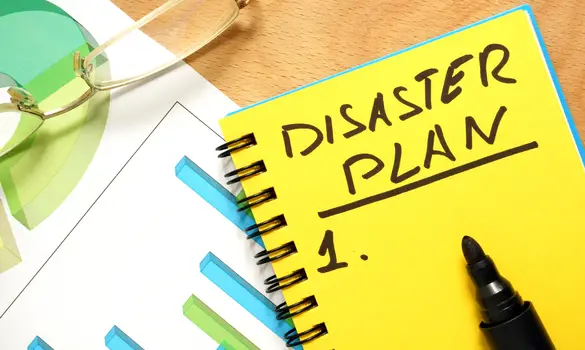
Disasters are inevitable. This is something business owners must prepare for. Of course, you can never be fully prepared for all situations and potential problems. However, having a disaster response system in place will give your business a better chance at making it out of a catastrophe unscathed. Disaster recovery plans are the best business strategy to give your organization a standardized response to catastrophic events, like data corruption, hardware failure or hacking. Still, small businesses require different tactics than those used by large corporations. Find out how to write a disaster recovery plan for small business in the post below.
Figure Out What Matters
The first step to proper disaster recovery planning is to identify the most crucial business assets for everyday operations. What business functions and technologies are absolutely imperative to keep operations running? By identifying those crucial business operations components, you will have a better idea of what you need to plan for in your disaster recovery plan. Remember to include employees in your consideration. Employees are some of your most vital business assets, yet they are frequently left out of disaster recovery plans. Identify the business assets and employees that are crucial for everyday business operations. This will provide you with a solid starting point to begin drafting a DR plan.
Anticipate Difficulties
Try to identify the threats and risks that your business is most likely to face. All businesses are at risk of hacking, malware and DDoS attacks. That is something you will certainly want to prepare for. Beyond that, what other IT concerns do you have for your business? What about natural disasters that could interrupt business operations? Consider all the different disasters your business could face that could impact day-to-day business. That way, you can create a disaster recovery plan that anticipates and effectively responds to these specific circumstances.
Plan Communications
When writing a disaster recovery plan, be sure include communications strategies. Communications is the single most important element for an effective disaster recovery plan. Your business needs to be able to communicate with customers about its current state and whether operations are up and running. One way to do this is to use a live answering service to respond to customer inquiries. In addition, business owners will need to be able to communicate with key employees to enact the disaster recovery plan after an unexpected catastrophe or emergency. With an effective communications strategy, you will be able to keep all stakeholders informed and up-to-date on what is happening with your business. Be sure to plan for this to learn how to write a disaster recovery plan that you can roll out seamlessly should the need arise.
Assign Roles & Responsibilities
Business owners must assign roles and responsibilities for each component of their DRP. In order to effectively roll out a disaster recovery plan, you need to have great employees heading up each particular strategy step. Remember to consider who your strongest employees are when deciding on these roles. In addition, you should factor in your employees’ unique strengths, weaknesses and existing areas of expertise. Choose employees to lead up parts of the plan that they are already familiar with. Be sure that you choose employees who demonstrate strong leadership skills and an ability to work well under pressure. As long as you choose your best employees to roll out disaster recovery plans, they are sure to be effective.
Perform A Test
Testing out your disaster recovery plan is the last step in creating an effective response strategy. The only way to identify holes in a recovery and response plan is to try it out. This also allows you to identify whether or not your employee response times are satisfactory, or whether you need to change the way you delegated leadership positions for the DRP. Do not inform employees of the exact date and time of the test. That way, you can get an accurate depiction of how employees will respond to a real disaster event. Once you analyze the results of your disaster recovery test, you can make adjustments and improvements to your strategy. This is the last step to effective preparing your business to respond to disaster.
If you want to know how to write a disaster recovery plan, follow the steps detailed above and leverage technology to secure your business. These disaster planning tactics for small business will help you respond to any and all circumstances with ease and confidence. That way, your bottom line is never harmed by a catastrophe of any size. First, identify the crucial parts of business operations and potential threats to those operations. Then, plan out business communications for post-disaster recovery and assign leadership roles and supervisory positions for every step of the DRP. Once you have done that, you can perform a disaster recovery plan test to see how your team will really respond and judge the overall effectiveness of your business strategy. Now that you know how to write a disaster recovery plan for small business, you need to go put your new knowledge to use as soon as possible to protect your business from catastrophe.
 Business First Family Business, Accounting, Finance, Investing, Marketing And Management
Business First Family Business, Accounting, Finance, Investing, Marketing And Management